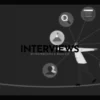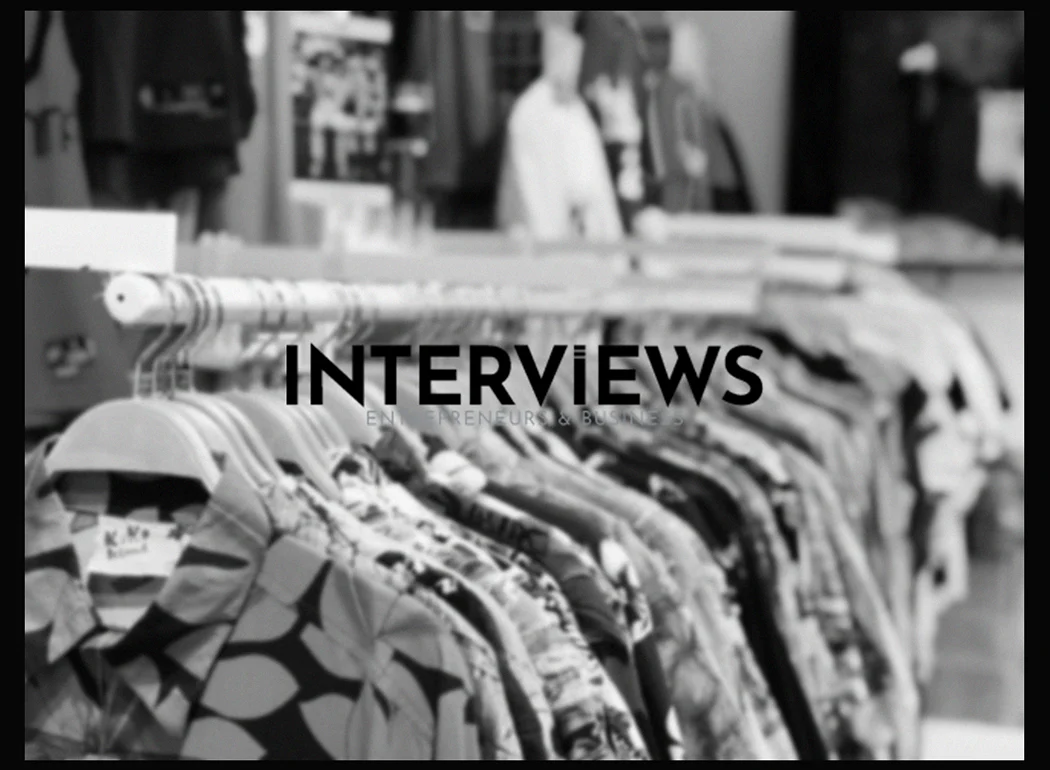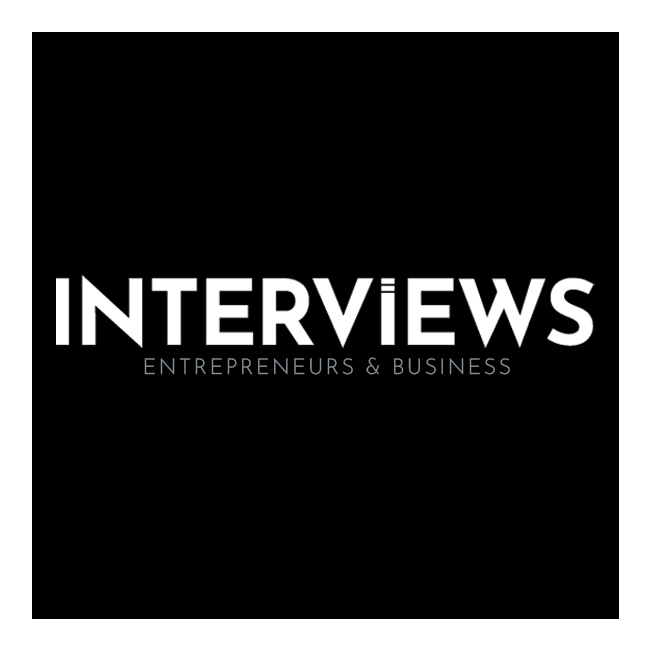Starting a clothing line sounds glamorous. Picture yourself, a fashion mogul, sketching designs with a latte. The reality? It’s less runway, more running uphill in heels. But it is doable and rewarding. Let’s dive into launching your clothing brand.
1. Crafting Your Business Blueprint
A business plan is your brand’s GPS. You wouldn’t start a trip without knowing where you go.
Define Your Fashion Niche
First, what’s your style vibe? Are you thinking streetwear, sustainable fashion, or activewear? Identifying your niche is like picking a lane on the fashion highway.
Know Your Dream Customer
Who are you designing for? Teenagers on TikTok? Professionals in power suits? Knowing your target market’s age, interests, and lifestyle is key to designing clothes they will love.
Unleash Your Brand’s Personality
What’s your brand’s story? Empowering women? Celebrating individuality? Your brand identity is the soul of your clothing line. It’s what sets you apart.
The Grand Business Plan
Your plan is your master document. It details your target market, brand identity, sales strategy, and financial projections. Think of it as the cheat sheet to your clothing empire.
2. Design Magic and Collection Development
Now for the fun part – bringing your fashion visions to life! First, some homework is necessary.
Trend Hunting Time
Fashion moves fast. Stay ahead by watching current and emerging trends. Fashion Week is your Super Bowl. Follow designers you admire and influencers. Soak it all in.
Design Your Heart Out (But Make it Cohesive)
Let your creativity flow in a collection uniquely *you*. Remember, it should make sense together. A cohesive collection tells a story and shows your brand’s aesthetic.
Fabric Sourcing: The Material World
Fabrics are the building blocks of designs. Go for high-quality materials. Is it luxurious silks? Durable denims? Eco-friendly bamboo? Your choices matter.
Tech Packs: Your Garment Blueprints
Ever built furniture without instructions? Chaos, right? Tech packs are your instructions for production. They show every stitch, seam, and zipper needed for manufacturers.
3. Production Powerhouse
Now, turn designs into clothes. This is where manufacturing comes into play.
Choose Your Production Path
How will your clothes be made? Doing it all yourself can work if you’re small-scale. Outsourcing becomes necessary as you grow. Each method has pros and cons; pick what fits your budget.
Money Matters: Production Costs
Production costs can make or break you. Research suppliers like a hawk. Find a balance between quality and price. Every penny saved adds to your profit.
Quality Control: The Non-Negotiable
Quality control is vital. Implement measures throughout production. From fabric checks to final inspection, ensure every piece meets your standards. Happy customers return.
4. Marketing & Sales: Get the Word Out
You have amazing clothes. Now how do people notice them? Marketing and sales are essential.
Build Your Online Kingdom
Website? Check. Social media? Double-check. An online presence is crucial. Showcase your brand and products on all digital channels.
Craft Your Marketing Magic
Don’t just post pretty pictures. Develop a strategy. Mix online tactics, like social media ads, with offline channels, like pop-up shops, to reach your audience effectively.
Retail Reality Check
Where will you sell? Your website is a must. Consider beyond, like boutiques or online marketplaces, to maximize your reach.
Community Vibes: More Than Just Customers
Engage with customers. Respond to comments. Run contests. Build a community around your brand. Loyal customers are ambassadors for you.
5. Legal Lowdown and Business Basics
The less-glamorous side of fashion business is essential. Let’s talk legal and business considerations.
Brand Name Protection
Your brand name is your identity. Protect it! Register your trademark to safeguard your reputation.
LLC? Maybe.
Should you form an LLC? It can offer liability protection, shielding your personal assets. Consider this as your business grows.
Funding Your Fashion Dreams
How will you fund your line? Loans, investors, or bootstrapping? Explore options and choose what aligns with your goals.
Taxes and Regulations: Adulting 101 for Fashion Brands
Taxes and regulations are crucial. Understand the requirements for running a clothing business. Ignorance isn’t bliss here.
6. The Dollar Dance: Startup Costs
Let’s talk numbers. How much does it cost to launch a clothing line? It varies wildly based on your scale and ambition.
Online Clothing Line: Lean & Mean
Starting online is often budget-friendly.
Initial Investment:
- Website/E-commerce Platform: $500 – $5,000.
- Initial Inventory: $2,000 – $10,000.
- Branding & Marketing: $500 – $2,000.
- Photography: $500 – $2,000.
- Legal Setup: $500 – $1,000.
Ongoing Expenses (Monthly):
- Website Hosting & Maintenance: $50 – $200.
- E-commerce Platform Fees: $50 – $100.
- Marketing & Advertising: Variable.
- Inventory Replenishment: Variable.
- Shipping & Packaging: Variable.
Large Retail Clothing Line: Go Big or Go Home
Thinking of a brick-and-mortar store? Be prepared for bigger upfront investments.
Initial Costs:
- Rent & Leasehold Improvements: $20,000 – $100,000+.
- Initial Inventory: $20,000 – $100,000+.
- Branding & Marketing: $5,000 – $20,000+.
- Staff Salaries: $20,000 – $50,000+.
- Equipment & Fixtures: $5,000 – $20,000+.
- Legal & Business Setup: $1,000 – $5,000+.
Ongoing Costs (Monthly):
- Rent & Utilities: Variable.
- Inventory Replenishment: Variable.
- Marketing & Advertising: Variable.
- Staff Salaries: Variable.
- Insurance & Legal Fees: Variable.
- Shipping & Packaging: Variable.
Hidden Cost Factors: Don’t Get Blindsided
- Production Costs: Factor in fabric, labor, and workshop costs if you’re making clothes.
- Design & Development: Designer fees are part of the budget.
- Sourcing: Importing fabrics includes shipping and duties.
- Profit Margins: Retail margins typically range from 40% to 60%. Know your range.
- numbers.
7. LLC: Liability Shield or Extra Baggage?
Should you form an LLC? Is it a must or a maybe? Let’s break it down.
Why an LLC Can Be Your Brand’s Best Friend:
- Liability Protection: Your assets remain secure if your business faces legal troubles. This is a huge benefit.
- Professional Credibility: An LLC adds trust and seriousness to your brand for customers and partners.
- Finance Separation: Keeps personal finances distinct. Makes accounting simpler.
- Tax Perks: Potential tax benefits based on your business type. Consult a tax professional.
- Smooth Operations: Easier to get business loans and bank accounts as a legitimate entity.
When an LLC Might Be Overkill (For Now):
- Tiny, Low-Risk Ventures: For very small projects, a sole proprietorship might suffice.
- Early Stages, Still Testing the Waters: You can start without an LLC, forming one as you grow.
LLC Checklist: Ready to Form One?
- Name Game: Pick a unique name available in your state.
- Paperwork Power: Register with your state’s Secretary of State.
- EIN Grab: Obtain an Employer Identification Number, like a social security number for your venture.
- Operating Agreement: Draft rules for your LLC, similar to a constitution.
- Business Bank Account: Open a bank account just for business. Keep funds separate!
8. Launching a Clothing Brand on a Shoestring Budget (or Free!)
No trust fund required to launch a clothing line. E-commerce and print-on-demand let you start low-cost or even $0 upfront!
9. Legally Locking Down Your Brand: Trademarks
Trademark your clothing brand. It creates legal protection. Follow these steps:
- Trademark Search: Verify your brand name isn’t taken on the USPTO website.
- Trademark Class Selection: Choose the correct class for clothing; yes, it exists.
- Application Time: Prepare and submit your application to the USPTO.
- USPTO Back-and-Forth: Respond to inquiries from the USPTO. Clarifications may be needed.
- Registration & Maintenance: Register after approval and maintain it, as trademarks are not permanent without upkeep.
10. Zero Experience, Maximum Fashion Dreams? Totally Possible.
No fashion degree? No issue. You can start a clothing line without experience. Here’s your roadmap.
Phase 1: Research and Planning – Knowledge is Power
- Fashion Industry 101: Study trends, target markets, and competitors. Knowledge is vital.
- Business Plan Basics: Define goals, audience, brand identity, and revenue plans. A simple plan beats none.
- Niche Down: Decide what clothing to sell. Find your niche in streetwear, eco-friendly, or lounge styles.
- Brand Identity Deep Dive: What differentiates your brand? Identify style, message, and core values.
- Realistic Goal Setting: Set both short-term and long-term goals. Start small, envision big.
Phase 2: Design and Production – From Idea to Garment
- Inspiration Hunt: Look to other brands and media for design prompts. Ideas can surface anywhere.
- Design Time (You Can Hire Help!): Create sketches or enlist a freelance designer. Design tools like Canva help too.
- Supplier Scouting: Source reliable suppliers for fabrics that meet budget and quality needs.
- Production Method Decision: Opt for DIY, hire a manufacturer, or use print-on-demand. Choose based on resources.
Phase 3: Marketing and Sales – Get Selling!
- Online HQ: Establish a website and social media for showcasing your products.
- Marketing Strategy 101: Determine how to reach customers. Social media ads or emails could work.
- Audience Building: Build a social following before launching. Create buzz around your designs.
- Dropshipping Option: Start on a budget—dropshipping allows you to sell without holding stock.
- Pricing Puzzle: Research prices and calculate costs, keeping target market in mind.
- Business Registration: Ensure legal protection for your brand name and structure.
Bonus Tips for the Aspiring Fashionpreneur:
- Network Like a Pro: Connect with designers and entrepreneurs for valuable insights.
- Patience is a Virtue (Especially in Fashion): Success takes time. Avoid expecting quick outcomes.
- Trend Tracker: Follow fashion trends closely. Stay current as the industry changes fast.
- Feedback Fanatic: Collect customer feedback to enhance your designs and products.
11. Brand Building Blocks: Laying a Solid Foundation
Creating a brand includes more than just logos on shirts. It revolves around crafting a personality and connection. Here’s your brand-building checklist:
- Know Thy Competition: Investigate similar brands. Identify their strengths and your unique angle.
- Market Research Deep Dive: Understand potential consumer needs and pain points thoroughly.
- Brand Personality Definition: Decide if your brand is edgy, sophisticated, playful, or minimalist. Create a distinct character.
- Brand Positioning Statement: Formulate a concise statement on what your brand is and its audience.
- Name Game Strong: Select a relevant and memorable business name that is available.
- Slogan Magic: Develop a catchy slogan summarizing your brand essence.
- Logo Love: Produce a professional logo that encapsulates your brand visually. First impressions count.
- Visual Language Creation: Specify your brand colors, fonts, and visual style while ensuring consistency.
12. Profitability Peek: How Much Can You Actually Make?
The crucial question: What’s the profitability of a clothing line? Margins can vary, with retail typically yielding 40% to 60%. Luxury brands might achieve higher margins, while mass-market ventures often do lower. It’s essential to balance costs with pricing.
13. Copyright vs. Trademark: Fashion Legal Jargon Decoded
A quick overview: Copyright safeguards original *artistic* works like fabric designs. Meanwhile, trademarks protect your *brand name and logo*. Both are critical in fashion but serve distinct functions.
Be aware that copyrighting clothing design incurs a filing fee for each goods or service class. Keep this in mind when budgeting.
14. Money-Making Moves: Turning Clothes into Cash
Earning money through a clothing brand isn’t solely about appealing designs. It requires product pricing strategies, smart marketing, and efficient operations to create revenue.
15. Starting a Clothing Brand with $0: Believe it!
You can start with zero dollars. Utilize print-on-demand and dropshipping as tools. Pair these with a strong online presence and community engagement to enter the market without financial strain.
16. Fabric Sourcing Secrets: Where to Find the Good Stuff
Sourcing fabric mirrors ingredient shopping—quality is key! Here’s how to optimize fabric sourcing strategies.
Know Your Fabric Needs: The Foundation
- Design-Driven Fabric Choice: Select fabrics that complement your designs. Activewear requires durability; loungewear requires softness. Match your brand aesthetic and customer wants.
- Fabric Construction Education: Gain insights on fabric types, weaves, and finishes. Become knowledgeable about fabrics!
- Quality Bar Setting: Set high standards for fabric quality in terms of performance and sustainability—never compromise here.
Supplier Scouting Missions: Where to Look
- Online Fabric Goldmines: Search online fabric platforms and supplier sites as valuable resources for materials.
- Trade Show Treasure Hunts: Visit industry events and trade shows to interact with suppliers directly.
- Mill Direct Dive: Consider sourcing from fabric mills directly; be aware of any Minimum Order Quantities.
- Distributor & Agent Allies: Engage with fabric distributors and agents who expand your fabric access.
- Local Fabric Market Finds: Explore local fabric markets in fashion hubs like LA for unique quantities and options.
Supplier Selection Checklist: The Vetting Process
- Quality First: Give priority to suppliers who provide superior fabrics meeting your standards.
- Sustainability Score: Evaluate suppliers practicing sustainability and ethics if that matches your brand values.
- Price & Lead Time Check: Discuss prices and confirm reasonable delivery times for fabric orders.
- MOQ Awareness: Understand Minimum Order Quantities and ensure they suit your production needs.
- Sample Request Strategy: Always ask for fabric samples before finalizing choices.
- Check quality. Make sure products meet expectations before placing bulk orders.
- Supplier Relationships: Build strong ties with reliable suppliers for a consistent supply chain.
Sourcing Strategies: Choose Your Path
- Direct Sourcing: Buy directly from mills or manufacturers. This can lower costs and increase control.
- Agent/Distributor Use: Leverage agents or distributors for broader fabric access and efficient sourcing.
- Jobber Option: Jobbers buy excess fabric at discounts. Quality can vary. Be cautious.
- Factory Advice: If you have a manufacturer, ask for fabric supplier recommendations. They often know trusted sources.
Fabric Sourcing Plan: Your Roadmap
Create a detailed fabric sourcing plan. Outline your fabric needs. List potential suppliers. Set timelines. Keep in mind fabric quantities, lead times, and sustainability goals. A solid plan helps avoid problems later.
17. Profitable Clothing Business Models: Beyond Basics
Want to boost profits in clothing? Check these options:
High-End Stores: Luxury Lane
- Higher Markup: Luxury stores charge premium prices, resulting in increased profit margins. Think designer pricing.
- Brand Value: Strong recognition and perceived quality allow for higher pricing. Brand power equals pricing power.
Profit Options: Diversify
- Vintage & Second-Hand Resale:
- Sustainable Style: Appeal to the growing sustainability market.
- Niche Market: Focus on specific vintage styles, eras, or designers to stand out.
- Online Selling Power: Use eBay, Poshmark, or your website to sell. Digital vintage is booming.
- Niche Categories:
- Specialization: Products such as chef jackets, uniforms, or athletic wear can create niche focus.
- Consistent Demand: Cater to industries with ongoing clothing needs. Reliability leads to revenue.
- Custom Print-on-Demand:
- Low Entry Barrier: Start lean with minimal inventory costs.
- Design Freedom: Offer custom designs. Let customers express their creativity.
18. Starting a Business with Zero Cash: From Broke to Boss
Broke but eager? Here’s how to start a business without funds:
Resourcefulness: Use Your Skills
- Freelance Skills: Writers, designers, or social media experts can freelance. Skills equal currency.
- Online Services: Tutoring, coaching, consulting – platforms like Upwork and Fiverr help launch your services.
- Content Creation: Blog, YouTube, or podcast. Passion combined with content can lead to income.
- Dropshipping: Sell online without handling inventory. Supplier manages shipping for a lower upfront cost.
- Print on Demand: Offer products like T-shirts or mugs without inventory costs. Profits come from designs on demand.
Low/No-Cost Models: Think Lean and Creative
- Virtual Assistance: Provide remote admin, tech, or creative assistance. High demand, low overhead.
- Social Media Management: Help businesses enhance their social media presence. Every business needs this expertise.
- Consulting Services: Share knowledge through consulting. Your expertise has value.
- Online Reselling: Find and resell products online. Platforms like eBay or Facebook Marketplace offer profit opportunities.
- Home Organizing: Help organize and declutter homes. People pay for peace and order.
Brand Building: Connections Count
- Website Basics: Even a simple website enhances credibility. An online presence is essential.
- Social Media Marketing: Free marketing via social media can build your brand and connect with clients.
- Networking: Attend industry events and join online communities to create connections. Networking opens doors.
- Customer Service: Excellent service leads to repeat customers and word-of-mouth growth. Happy customers help your business.
Funding Options: Seek Support
- Small Business Grants: Research and apply for grants. Free money is helpful.
- Crowdfunding: Use platforms like Kickstarter or GoFundMe to gather funds from the crowd.
- Angel Investors: Seek angel investors. Pitch your vision to secure funding.
- Family Funding: Consider borrowing from loved ones but set a clear repayment plan to maintain relationships.
- Pre-Selling: Sell your product before it exists to generate initial cash flow. It’s a smart move.
Efficiency Tactics: Smart Spending
- Free Tools: Use free or low-cost tools for marketing and website management. Budget-friendly options exist.
- Outsource Tasks: Delegate tasks you cannot handle. Focus on your strengths for efficiency.
- Expense Tracking: Monitor expenses carefully. Cut costs where possible. Every saved dollar helps.
19. Trademark Costs: The Price of Protection
Trademarking your brand involves various fees:
- Filing Fee: This is the base cost for each trademark class.
- TEAS Plus Application: Using TEAS Plus can save you on filing fees compared to TEAS Standard.
- Additional Fees:
- Insufficient Info Fee: A $100 fee applies if your application lacks necessary information. Double-check everything!
- Custom Description Fee: $200 for custom descriptions instead of standard forms, plus $200 for lengthy descriptions. Use standard terms when possible to save money.
- California Trademark: Filing in California costs around $70. State trademarks protect within that particular state.
- Renewal Fees: Renewals cost about $650 per class. Maintain trademarks to keep them active.
- Online Legal Service Costs: Using online legal services can simplify trademarking at an added expense.
- Legal Fees: Hiring an attorney for trademark guidance is expensive but offers expert advice, especially for complex cases.
20. Does Your Clothing Brand *Need* an LLC? The Verdict
Is an LLC necessary for your clothing brand? Let’s examine.
LLC Benefits: The Positive Side
- Liability Protection: Safeguard personal assets from business debts. Your house, car, and savings remain secure!
- Professional Image: Improves brand credibility. Looks more trustworthy to customers and partners.
- Financial Clarity: Keeps personal and business finances distinct, simplifying accounting.
- Tax Flexibility: Choose between tax structures like pass-through or corporate taxation for optimization.
- Name Protection: Register your business name, preventing others from using it in your state.
- Funding Advantages: Easier access for loans and investments. LLCs attract funders more effectively.
No LLC Needed? The Caution Side
- No Legal Requirement: You *can* begin as a sole proprietorship without an LLC. It is legal but poses more risk.
- Risk Evaluation: Understand the risks and advantages of each structure before making your choice.
Starting a clothing line is an exciting journey. With careful planning and passion, your fashion dreams can become reality. Design your empire today!





